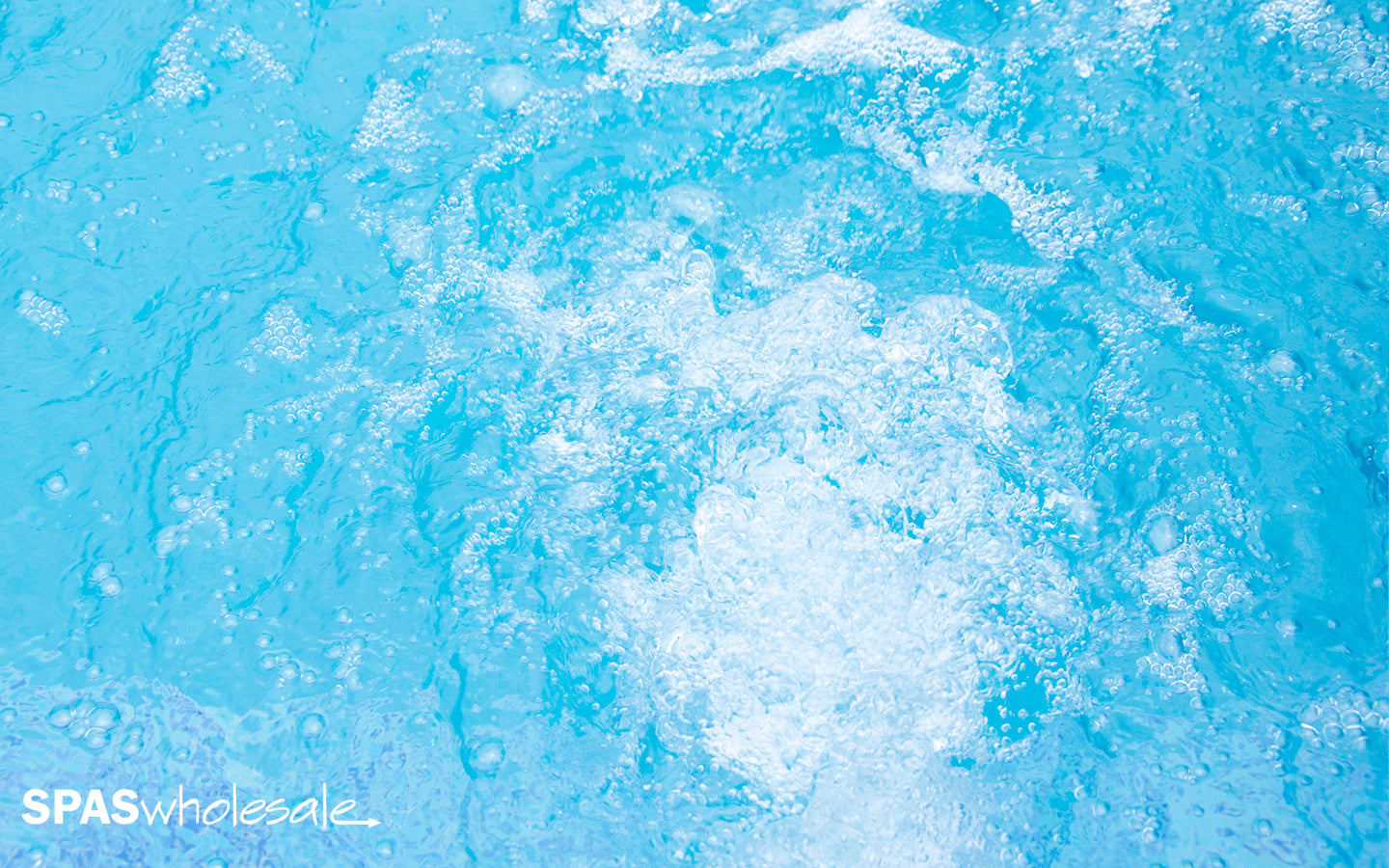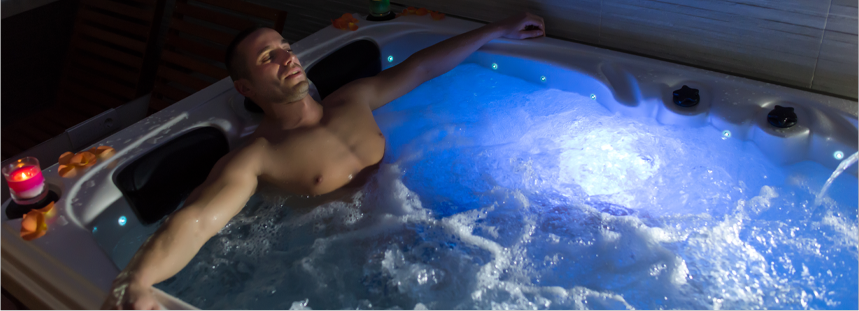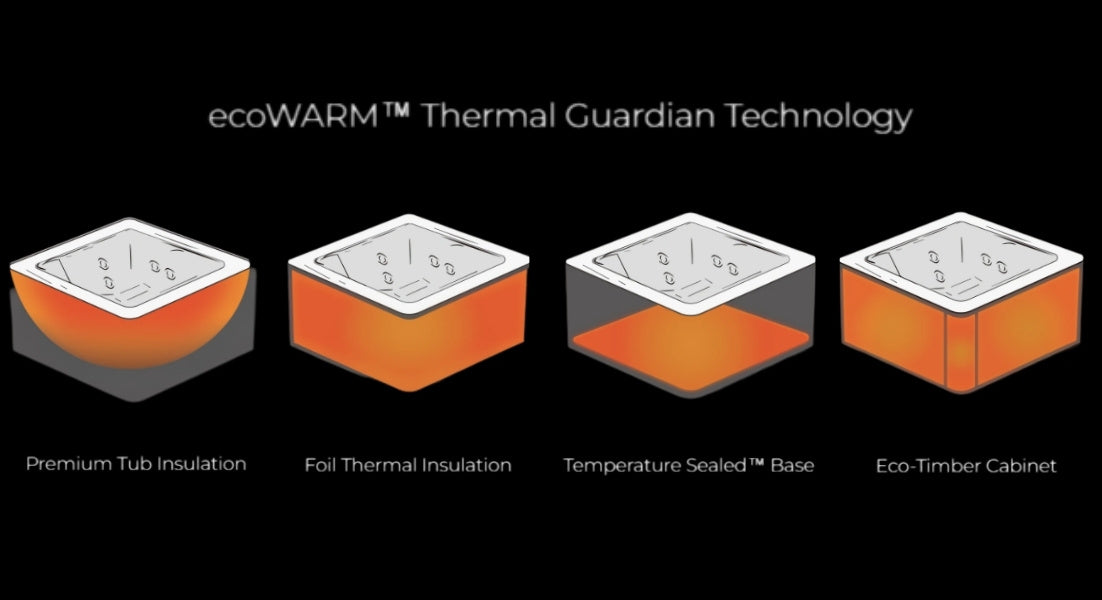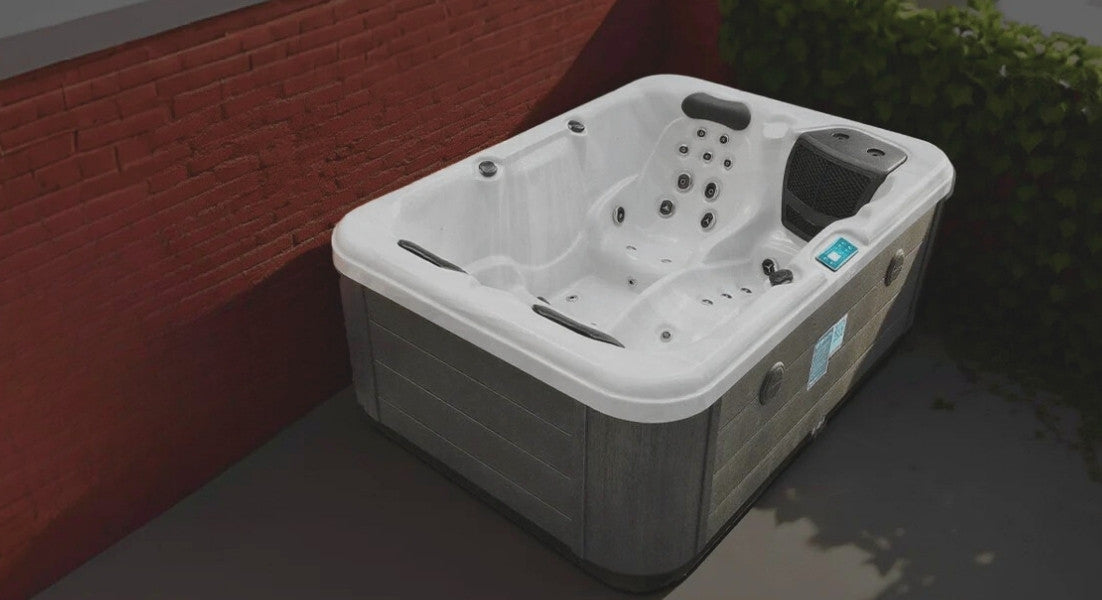A Brief Guide to Spa Maintanence
Every spa needs regular upkeep to keep the water hygienic and secure for bathers. In this guide, we'll cover the essentials to know for spa maintenance. See our other in depth guides for more detail on how to keep your spa in tip top condition all year ling.
Spa Filtration
Most spas use a pump and cartridge filter system. Check to make sure the filtration system is functioning properly on a regular basis. A dirty cartridge filter will cause the filter's efficiency to degrade, resulting in dirty and perhaps polluted water.
Spa cartridges typically require cleaning once a week (depending on usage), but if your hot tub is often used or there is a high danger of contamination, we recommend more frequent cleaning (e.g. grass in your hot tub).
Testing Spa Water
Water testing is an essential part of keeping your spas water clean, safe, and healthy. Using test strips is the quickest and most accurate way to determine the water's sanitiser, pH, and total alkalinity levels. This gives you the opportunity to make any necessary chemical modifications.
Whether the spa is being used or not, we suggest all spa owners to test their water weekly. This is because warm water needs to be sanitised frequently.
To get the best accurate reading from any test strip, it's crucial to carefully follow the directions on the bottle. Once you have tested the circumstances of your spa for some time, you will get the hang of the testing and following maintenance requirements.
Balancing Spa Water
Keeping your spas water in balance is crucial. You need to consider the water's total alkalinity (TA) and total hardness (TH). Spas can develop scale when the alkalinity of the water is too high, which can result in bad water.
It is important to remember that the amount of chlorine and bromine consumed will change based on your circumstances. Even when your spa is not in use, the consumption of chlorine and bromine will continue. Make sure to test the water in your spa every week and make adjustments as necessary.
Which Chemicals Do I Need to Use?
Yes. You need the proper hot tub chemicals to maintain your tub clean and safe for soaking in. However, which ones?
Choosing a Spa Sanitiser
Spa Sanitisers Overview
The primary purpose of a sanitiser is to kill potentially harmful bacteria in your spa. Heated water provides a fertile environment for bacteria to thrive in, and your sanitiser is your defence against infections. Always dose accordingly and never use your spa without an effective sanitiser.
Sanitiser is the most crucial spa chemical you'll use. It keeps your spa water sterilised and safe. The first thing to pick is which hand sanitiser you want to use. There are three common options in use in Australia today.
Chlorine
The most popular sanitiser is chlorine, which has a few benefits over the others: It is economical. It is simple to manage and add. It kills bacteria and algae aggressively.
Chlorine destroys pollutants. And emits a smell during the process. This is as it oxidises and dissolves into its chemical constituents. The oxidation produces chloramines as a byproduct of this chemical reaction. The chloramines are responsible for the chlorine scent.
If you can smell chlorine your water doesn't contain enough chlorine. Test your water and shock your water to fast bring it back up, get rid of the chloramines, and put the chlorine back to work removing impurities if necessary.
Bromine
The second-most often used sanitiser after chlorine, bromine has one major advantage over chlorine: it doesn't oxidise, therefore it doesn't release chloramines. Instead, pollutants are disassembled at the molecular level by bromine, which ionises contaminants.
Other benefits of bromine over chlorine include: Since it has a lower pH than chlorine, maintaining the balance of the water is a little bit simpler. It lasts more time. It treats your skin more gently.
Biguanide
Biguanide, a non-chlorine sanitiser, is just as effective at killing bacteria as chlorine and bromine.
There are a few additional benefits as well. It doesn't require as much use as chlorine or bromine. At every level, there is no smell. You and your hot tub guests will notice that the water is smoother as a result.
What about Spa Shock?
A water treatment called Spa Shock oxidises (gases off) sweat, body oils, dead chloramines, and other contaminants from your hot tub water.
There are typically two different varieties of Spa Shock. There are two types of shock: chlorine-based shock (Sodium Dichlor), which both sanitises the water and raises your sanitiser levels, and non-chlorine-based shock (Potassium Monopersulfate or MPS), which only oxidises the water.
Spa shock's primary function is to decompose organic waste pollutants, which are to blame for foul smells and hazy or frothy hot tub water. It accomplishes this by swiftly eliminating the outer electrons from impurities in the water that the spa shock comes into contact with. This process is known as oxidising the water.
For safe, sanitary, and crystal-clear hot tub water, occasional shocking is necessary, regardless of the sanitising system you employ. Additionally, regular application of spa shock will ensure that your sanitiser operates at its best. It is the best primary shock to regularly combine with any of these sanitisers.
What is Total Alkalinity?
What is alkalinity? and "How do I keep it at the proper level?" are frequent asked questions. It's critical to maintain balanced alkalinity, as a healthy balance is crucial.
The capacity of your hot tub water to neutralise acids is measured by its total alkalinity. It's a crucial component of pH balancing and is occasionally referred to as a "buffer" since it enables water to withstand abrupt pH shifts.
Unbalanced alkaline levels can cause your hot tub's water to seem unappealingly (with a green tint), and in rare situations, they can have a drying impact.
Unbalanced alkaline levels can cause your skin to become dry and can also have a negative impact on the appearance of the water in your hot tub (giving it a green tint). The more dangerous of the two extremes is low alkalinity. Because the water can't as effectively neutralise the effects of acids, such as those caused by acid rain or naturally existing minerals, it might result in green water and quick pH changes.
The recommended range for total alkalinity is 80–120 ppm.
Quick Guide Alkalinity and Stabilise pH
Use Alka-Plus to raise low alkalinity and stabilise pH. Alka-Plus typically raises the alkalinity level on your test strip by one square with each serving.
Instead of adding a lot of chemicals all at once, it is recommended to gradually increase your alkalinity over time. Make a change, and then check the water again the next day to see if more products need to be added.
Use pH Reducer to lessen high alkalinity levels. One capful of pH Reducer will, on average, lower your alkalinity level by around 1 square on your test strip. To avoid adding too much chemical and lowering the levels too low, pH Reducer should be added gradually.
You must test your pH level the day after adjusting your alkalinity to determine whether you need to raise it to an acceptable range because pH reducer lowers both alkalinity and pH. Prior to altering the pH, make sure your alkalinity level is within the allowed range.
After adjusting the alkalinity, if your water still has a green tint, make sure the sanitizer level is where it should be (add 30 grams,1 Capful of Sun-Boom if required).
To restore water clarity if the sanitizer level is good, add 100 grammes (4 capfuls) of Spa Shock.
Turn on one of your jet pumps to circulate the water for 20 minutes after adding chemicals to your hot tub's water.
What is Spa Water pH?
Managing pH and total alkalinity levels is essential for achieving optimum spa water chemistry balance. Correct spa water pH levels keep your bathers safe and prevent cloudiness and scale deposits. In this guide, we'll outline how you can do this to keep your spa water pH levels within the ideal range.
On the Spa water pH scale, 7 is perfectly neutral water. pH Levels lower than 7 are more acidic, and those higher than 7 are more basic. If your water pH varies too far on either side of 7, you can experience potentially water for your bathers or damaging water for your spa equipment.
One of the main reasons of hazy spa water is an excessively high pH. Try using a pH decreaser to bring things down to normal if the level rises beyond 7.6 and you start to see issues. Remember that using a pH increaser can also increase the alkalinity, thus if the level is too low, you should test it again and maybe make adjustments.
If both the pH and alkalinity levels are low, raising both will be accomplished by adding an alkalinity increaser; however, if the alkalinity increaser does not raise the pH to the proper level, pH adjustment will need to be made.
Low pH and alkalinity might harm your spa Scaling can be brought on by high pH and alkalinity, which can potentially harm the equipment. The heater is in danger on both sides. Low pH will cause the heater element to corrode and eat away, and high pH will deposit scale around the element, making the heater work harder to heat your hot tub.
Use a pH decreaser to bring the pH and alkalinity levels back to normal if they are both too high.
Putting it All Together to Maintain Correct Water Balance
When we test our Spa water we are testing for correct water balance. To test pH, alkalinity and calcium levels in the water, use the spa test strips that will have come with your spa chemical test kit.
Correct water balance ensures that equipment and surfaces are protected and that water is comfortable for bathers.
Water quality will differ from area to area around the country. It is recommended that you regularly test your water using spa water test Strips, and adjust as required.
General Spa Cleaning
In addition to maintaining the appearance of your spa, routine waterline cleaning can help maximise the effectiveness of any spa chemicals added to the water of your spa. Because many common household items contain chemicals that produce foaming in a hot tub or change the pH, it is important to use specific spa cleaning products.Summary
Understanding the basics of spa Maintenance will help you to maintain optimum spa water balance. You can head off most chemistry problems that wreak havoc on your bathers and your spa equipment.
And remember it's best practice to change the spa water completely at least every three or four months. This will prevent having to struggle to balance poorly balanced water in the first place.





Share:
Maintaining Your Spa During Winter
5 Benefits of Owning a Spa